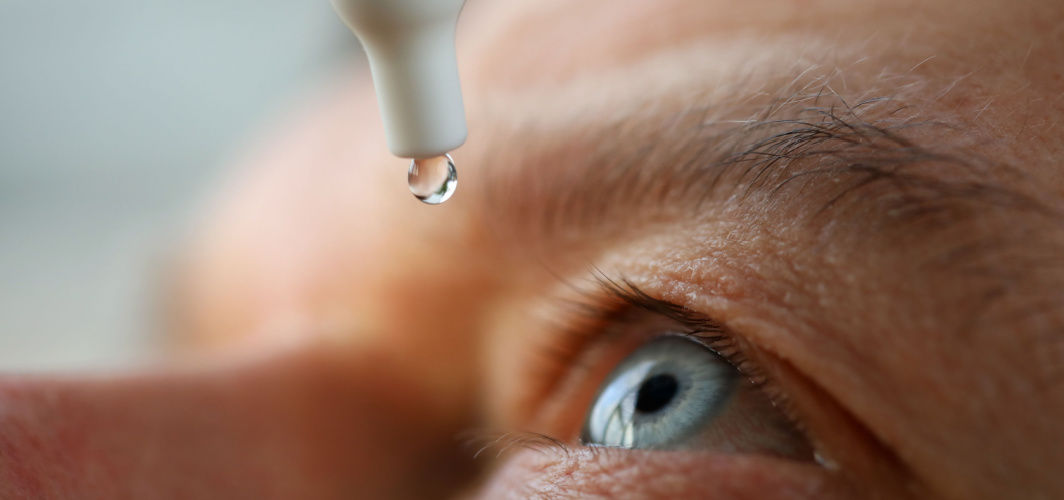General Health
7 Common Eye Diseases, Types, Causes & Symptoms
11 min read
By Apollo 24|7, Published on - 10 October 2023, Updated on - 12 October 2023
Share this article
0
0 like

Maintaining good vision health is crucial for overall well-being and quality of life. Our eyes are our windows to the world, allowing us to experience the beauty around us. Unfortunately, various eye diseases can affect our vision, hindering our daily activities and significantly impacting our lives. Several eye diseases types can affect people of all ages. In the upcoming sections, we will delve deeper into 7 common eye diseases, exploring their types, causes, eye diseases symptoms, and available treatment options.
1. Age-related Macular Degeneration (AMD)
Age-related Macular Degeneration (AMD) is a common eye disease that affects the macula, the central part of the retina responsible for sharp, detailed vision. There are two types of AMD:
- Dry AMD: It is the more common form and occurs when the macula thins and breaks down over time. It usually progresses slowly and can cause blurred or distorted vision.
- Wet AMD: It is a more severe form that occurs when abnormal blood vessels grow under the macula. This can lead to sudden vision loss if left untreated.
Causes of AMD
The exact causes of AMD are not fully understood, but several risk factors have been identified. These include:
- Age
- Family history
- Smoking
- Obesity
- High blood pressure
- Prolonged exposure to sunlight
Symptoms and Early Signs of AMD
Early signs of AMD may include:
- Difficulty reading or recognising faces
- Blurry or distorted vision
- Seeing dark spots or straight lines appearing wavy
Prevention and Management Strategies for AMD
While there is no cure for AMD, there are steps you can take to help prevent its progression. These include regular eye exams, maintaining a healthy lifestyle, eating a balanced diet rich in fruits and vegetables, protecting your eyes from harmful UV rays, and quitting smoking if you are a smoker.
2. Cataracts
Cataracts are one of the most common eye diseases. The lens, which is normally clear, becomes cloudy, leading to blurred vision and other visual impairments. This condition develops gradually and can affect both eyes.
Cause of Cataracts
The exact cause of cataracts is still unknown, but certain factors contribute to their development. These include:
- Age
- Family history
- Smoking and alcohol consumption
- Diabetes
- Prolonged exposure to sunlight
- Certain medications like corticosteroids
Symptoms and Early Signs of Cataract
In the early stages, cataracts may not cause noticeable symptoms. However, as the condition progresses, you may experience:
- Blurry or cloudy vision
- Increased sensitivity to light
- Difficulty seeing at night
- Frequent changes in eyeglass prescriptions
- Seeing halos around lights
Diagnosis and Treatment Options for Cataract
If you suspect you have cataracts, consult an ophthalmologist who will conduct a comprehensive eye examination.
- Treatment options include wearing glasses or contact lenses to correct vision, using brighter lighting for reading and other activities, and undergoing cataract surgery if necessary.
- Moreover, managing underlying health conditions like diabetes, eating a balanced diet rich in fruits and vegetables, and weight management can help reduce the risk of cataracts.
3. Glaucoma
Glaucoma is a group of eye disorders characterised by damage to the optic nerve, typically caused by increased pressure inside the eye. It is often referred to as the "silent thief of sight" because it can develop gradually without noticeable symptoms. There are two main types of glaucoma:
- Open-angle Glaucoma: Open-angle glaucoma, the most common type, occurs when the drainage canals in the eye become clogged over time.
- Angle-closure Glaucoma: It occurs when the iris blocks the drainage angle in the eye suddenly.
Risk Factors of Glaucoma
Several factors increase the risk of developing Glaucoma. These include:
- Age
- Family history
- Certain medical conditions (such as diabetes or high blood pressure)
- Long-term use of corticosteroids
- Eye injuries
Symptoms and Early Signs of Glaucoma
In the early stages, glaucoma often has no symptoms. As the disease progresses, individuals may experience:
- Gradual peripheral vision loss
- Tunnel vision
- Blurred vision
- Halos around lights
- Eye redness
- Pain or discomfort
- Headaches
Treatment and Management Options for Glaucoma
Regular eye exams are essential for diagnosing glaucoma early.
- These exams may include tonometry to measure eye pressure, ophthalmoscopy to assess the optic nerve, and visual field testing to check for peripheral vision loss.
- Treatment options include medications (eye drops or pills), laser therapy, or surgery to improve drainage and reduce eye pressure.
4. Refractive Errors
Refractive errors are common eye conditions that affect the way light is focused on the retina, leading to blurry vision. In this section, we will delve into the three types of refractive errors.
A. Myopia
Myopia, commonly known as nearsightedness, is a common refractive error that affects a significant number of people in India. Myopia occurs when the shape of the eye causes light to focus in front of the retina instead of directly on it. This leads to blurred distance vision and difficulty in seeing objects far away.
Myopia can be caused by both genetic and environmental factors. Additionally, excessive near-work activities like reading or using digital devices for long periods can contribute to the development of myopia.
Symptoms of Myopia
Common symptoms include:
- Squinting
- Headaches
- Eyestrain
- Difficulty seeing distant objects
Treatment Options for Myopia
Myopia can be corrected using glasses or contact lenses that help focus light properly onto the retina. Refractive surgery, such as LASIK or PRK, is also an option for some individuals.
B. Hyperopia (Farsightedness)
Hyperopia, also known as farsightedness, is a common refractive error that affects many individuals. It refers to a condition where distant objects appear clearer than nearby objects. Hyperopia occurs when the eyeball is shorter than normal or when the cornea has less curvature. As a result, light entering the eye focuses behind the retina instead of directly on it.
Hyperopia can be caused by genetic factors, with some individuals having a family history of the condition. Additionally, certain medical conditions like diabetes or medication side effects may contribute to hyperopia development.
Symptoms of Hyperopia
- Difficulty focusing on close objects
- Blurry near vision
- Eye strain or fatigue after performing near tasks for extended periods
- Headaches
Treatment Options for Hyperopia
Glasses and contact lenses are commonly used to correct hyperopia. These visual aids help in refracting light correctly onto the retina. Refractive surgery, such as LASIK or PRK, is also an option for individuals seeking a permanent solution.
C. Astigmatism
Astigmatism is a common refractive error that affects the way light enters the eye, leading to blurred or distorted vision. It occurs when the cornea or lens of the eye has an irregular shape, causing multiple points of focus instead of a single point.
Astigmatism can be present from birth or develop later in life due to genetic factors or eye injuries. Certain conditions like keratoconus and eye surgeries can also contribute to astigmatism.
Symptoms of Astigmatism
- Blurred or distorted vision
- Eyestrain
- Headaches
- Difficulty seeing at night
- Squinting
- Eye discomfort
Treatment Options for Astigmatism
Glasses and contact lenses are commonly used to correct astigmatism by compensating for the irregular shape of the cornea or lens. Refractive surgery, such as LASIK or PRK, can also be considered for a more permanent solution.
5. Eye Infections and Inflammations
Eye infections and inflammations can cause discomfort and affect your vision. In this section, we will discuss two common eye conditions.
A. Conjunctivitis
Conjunctivitis, commonly known as Pink Eye, is an inflammation of the conjunctiva, the thin tissue that covers the white part of the eye. This condition is characterised by redness, itching, and discharge from the eyes. There are three main types of conjunctivitis:
- Viral
- Bacterial
- Allergic
Viral and bacterial conjunctivitis can be caused by a viral or bacterial infection, respectively. Allergic conjunctivitis is triggered by allergens such as pollen, dust, or pet dander. Risk factors include close contact with infected individuals, poor hygiene practices, and allergies.
Symptoms of Conjunctivitis
Common symptoms of conjunctivitis include:
- Redness in the eye(s)
- Itching or irritation
- Watery or sticky discharge
- Swollen eyelids
- Increased sensitivity to light
Prevention and Treatment Options for Conjunctivitis
To prevent conjunctivitis, it is crucial to practice good hygiene, such as washing hands regularly and avoiding touching the eyes. Treatment options include using prescribed eye drops or ointments, applying warm compresses to soothe the eyes, and avoiding contact lenses until the infection clears.
B. Blepharitis
Blepharitis is a common eye condition characterised by inflammation of the eyelids. It can affect people of all ages and can be caused by various factors. The condition is often chronic and recurring, leading to discomfort and potential vision problems if left untreated.
Causes and risk factors of blepharitis include bacterial or fungal infections, allergies, seborrheic dermatitis, and dysfunction of the oil glands in the eyelids. Poor hygiene, contact lens use, and certain medical conditions like rosacea or dry eye syndrome can also contribute to its development.
Symptoms of Blepharitis
Symptoms of blepharitis may include:
- Redness
- Itching
- Swelling of the eyelids
- A gritty sensation in the eyes
- Crusting along the lash line
- Excessive tearing or dry eyes
Diagnosis and Treatment Options for Blepharitis
Diagnosis of blepharitis is usually made by an eye doctor through a physical examination and evaluation of symptoms. Treatment options include warm compresses, gentle eyelid cleaning with prescribed solutions, antibiotics or anti-inflammatory medications, and artificial tears to relieve dryness.
6. Retinal Disorders
The retina plays a crucial role in vision, and any disorder affecting it can have a significant impact on your eyesight and vision health. This section will discuss two common retinal disorders.
A. Diabetic Retinopathy
Diabetic retinopathy is a common eye disease that affects individuals with diabetes. It occurs when high blood sugar levels damage the blood vessels in the retina, which is the light-sensitive tissue at the back of the eye. It can lead to vision loss if left untreated. There are two main types:
- Non-proliferative Diabetic Retinopathy (NPDR)
- Proliferative Diabetic Retinopathy (PDR)
The exact cause of diabetic retinopathy is still unknown, but it is believed to be related to high blood sugar levels over time. Other factors that can increase the risk include high blood pressure, high cholesterol levels, smoking, and a long duration of diabetes.
Symptoms of Diabetic Retinopathy
In the early stages, diabetic retinopathy may not cause any noticeable symptoms. As the condition progresses, symptoms can include:
- Blurred vision
- Floaters
- Dark or empty areas in your vision
- Difficulty seeing at night
- Sudden vision loss
Management Strategies for Diabetics
Managing diabetes is crucial in preventing or slowing down the progression of diabetic retinopathy. This includes maintaining healthy blood sugar levels through diet, exercise, and medication as prescribed by your healthcare provider. Regular eye exams are also essential to detect and monitor any changes in your eyes.
B. Retinal Detachment
Retinal detachment is a serious condition that affects the retina, the thin tissue at the back of the eye responsible for converting light into electrical signals for the brain to interpret as images. When the retina detaches from the underlying tissue, it can lead to vision loss if not treated promptly. Retinal detachment can be classified into three types:
- Rhegmatogenous
- Tractional
- Exudative
Retinal detachment can be caused by several factors, including age-related changes in the vitreous gel inside the eye, trauma or injury to the eye, previous eye surgery, nearsightedness, and certain medical conditions like diabetes. Individuals with a family history of retinal detachment are also at an increased risk.
Symptoms of Retinal Detachment
The symptoms of retinal detachment may include:
- Sudden onset of floaters
- Flashes of light
- A curtain-like shadow over your vision
- A sudden decrease in vision
Emergency Treatment Options for Retinal Detachment
The primary treatment for retinal detachment is surgery, which aims to reattach the retina and prevent further vision loss. The specific surgical procedure will depend on the severity and location of the detachment. Prompt diagnosis and treatment can greatly increase the chances of restoring vision.
7. Dry Eye Syndrome
Dry eye syndrome, also known as keratoconjunctivitis sicca, is a chronic condition characterised by insufficient moisture or lubrication on the surface of the eyes. It can occur due to various factors, such as decreased tear production, increased tear evaporation, or an imbalance in the composition of tears.
1. Causes and Risk Factors for Dry Eye Syndrome
There are several causes and risk factors associated with Dry Eye Syndrome.
- Ageing is a significant risk factor, as tear production tends to decrease with age.
- Other causes include certain medications, hormonal changes in women (especially during menopause), environmental factors like dry climate or air conditioning, and medical conditions such as diabetes, Sjogren's syndrome, or rheumatoid arthritis.
2. Symptoms of Dry Eye Syndrome
The symptoms of Dry Eye Syndrome may vary from person to person but commonly include:
- Stinging or burning sensation in the eyes
- Redness
- Blurred vision
- Sensitivity to light
- A feeling of grittiness or foreign body sensation in the eyes
- Excessive tearing as a reflex response to dryness
3. Management strategies for Dry Eye Syndrome
The management of Dry Eye Syndrome involves a combination of approaches.
- The use of artificial tears or lubricating eye drops can provide temporary relief from symptoms by supplementing natural tears.
- Lifestyle changes such as taking regular breaks during prolonged computer use, maintaining good eyelid hygiene, staying hydrated, and avoiding exposure to smoke or dry environments can also be beneficial.
- In some cases, medications like anti-inflammatory eye drops or prescription eye ointments may be prescribed to manage underlying inflammation and improve tear production.
Conclusion
In conclusion, regular eye exams play a crucial role in maintaining good vision health and preventing eye diseases. Through early detection, many eye diseases can be treated effectively, reducing the risk of permanent vision loss or impairment. We encourage you to prioritise your vision health by scheduling regular eye exams. By doing so, you can take proactive steps towards maintaining a clear and healthy vision for a better quality of life. Remember, your eyes are precious, and taking care of them should be a priority.
General Health
Consult Top Opthalmologists
View AllFrequently Asked Questions
Can eye diseases be prevented?
Can eye diseases be prevented?
How often should I have an eye exam?
How often should I have an eye exam?
What are the common symptoms of eye diseases?
What are the common symptoms of eye diseases?
Can computer or smartphone usage cause eye diseases?
Can computer or smartphone usage cause eye diseases?
Are eye diseases hereditary?
Are eye diseases hereditary?
Leave Comment
Recommended for you

General Health
These Exercises Can Reverse Muscle Ageing!
Everyone knows that doing exercise is good for us. Its numerous health benefits are widely known. It’s also not news that exercising helps in strengthening muscles and improving their health. However, did you know that it can also help in reversing muscle ageing altogether? There have been multiple studies conducted that prove this miraculous effect of physical activity.

General Health
Recognising the Early Signs of Piles
Piles or haemorrhoids can cause discomfort and pain. Learn about the common piles symptoms and how to manage them. Find out more about piles treatment and prevention methods.

General Health
Thyroid Treatment: Can Thyroid Disorders Be Cured Completely?
Thyroid disorders, including hyperthyroidism and hypothyroidism, can be treated and improved with the help of a proper treatment plan. Find out more about how these disorders are treated and what you can do to keep them under control.
Subscribe
Sign up for our free Health Library Daily Newsletter
Get doctor-approved health tips, news, and more.
Visual Stories

Science-backed Home Remedies for Burns and Blisters
Tap to continue exploring
Recommended for you

General Health
These Exercises Can Reverse Muscle Ageing!
Everyone knows that doing exercise is good for us. Its numerous health benefits are widely known. It’s also not news that exercising helps in strengthening muscles and improving their health. However, did you know that it can also help in reversing muscle ageing altogether? There have been multiple studies conducted that prove this miraculous effect of physical activity.

General Health
Recognising the Early Signs of Piles
Piles or haemorrhoids can cause discomfort and pain. Learn about the common piles symptoms and how to manage them. Find out more about piles treatment and prevention methods.

General Health
Thyroid Treatment: Can Thyroid Disorders Be Cured Completely?
Thyroid disorders, including hyperthyroidism and hypothyroidism, can be treated and improved with the help of a proper treatment plan. Find out more about how these disorders are treated and what you can do to keep them under control.